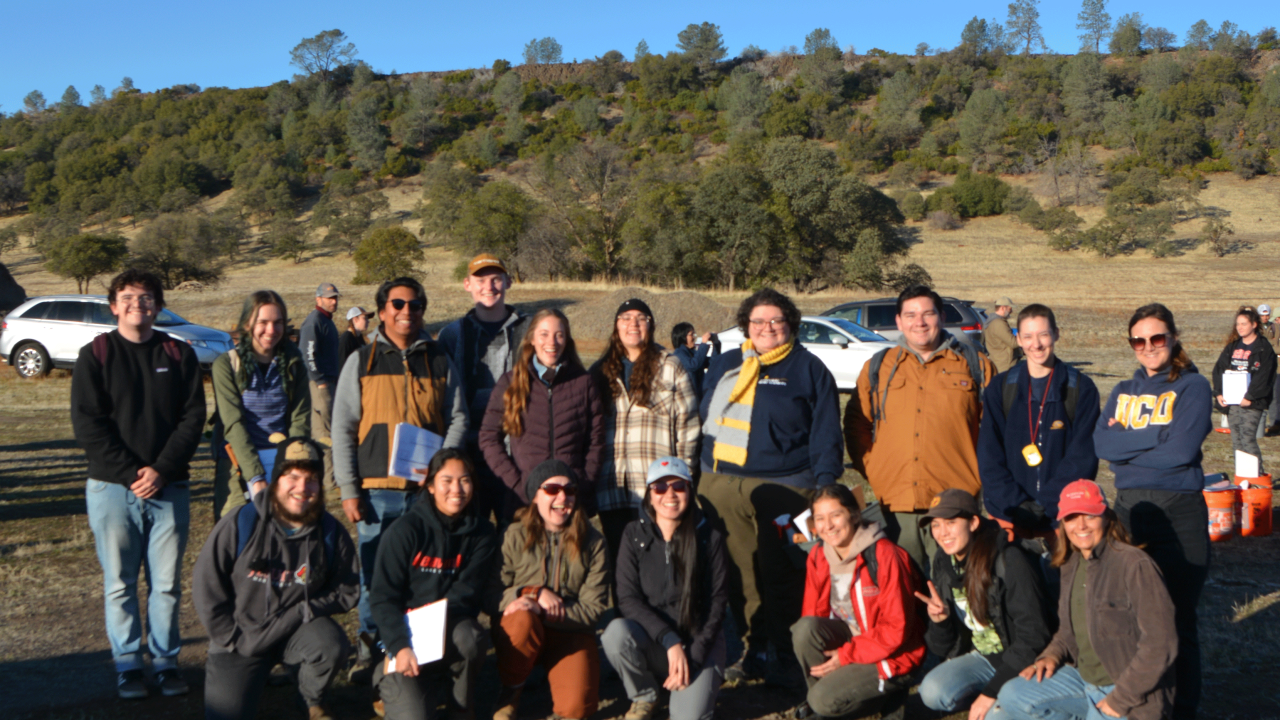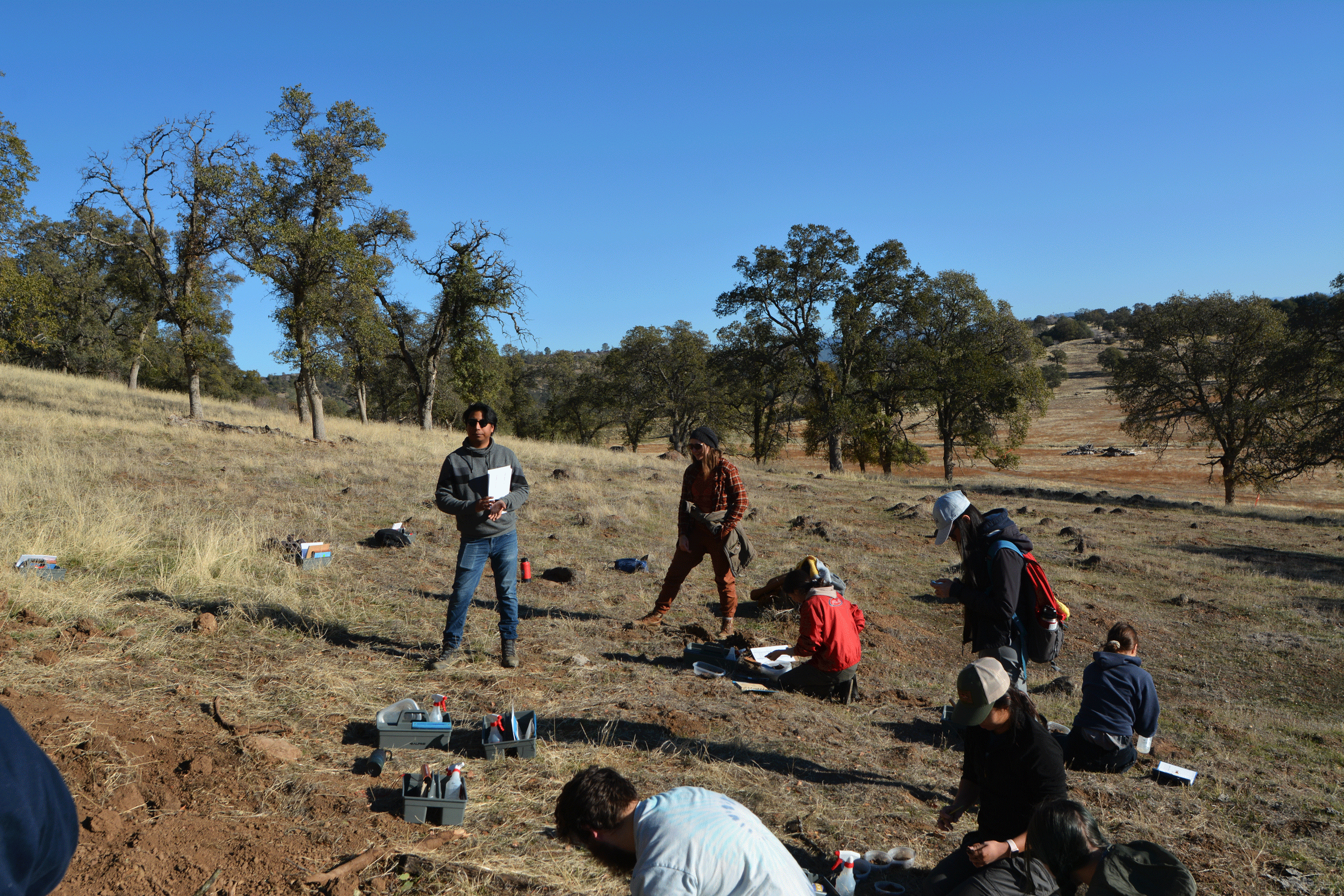
UC Davis Team Competes in Regional Soil Judging Contest
A team of UC Davis doctoral and undergraduate students have something to celebrate as the fall quarter comes to a close. UC Davis sent a team to the Region 6 (southwest) Collegiate Soil Judging Competition, where groups are scored on their ability to describe and classify soils and landscapes.
The competition was Nov. 19 at Rosasco Ranch in Jamestown and hosted by California State University, Fresno with assistance by soil scientists with the Natural Resources Conservation Service within the U.S. Department of Agriculture. Toby O’Geen, professor with the Department of Land, Air and Water Resources and chair of the Soils and Biogeochemistry Graduate Group, said a team of 14 undergraduate students competed in this year’s event. The team was led by a trio of doctoral students who served as coaches and helped them prepare for the nearly five-hour-long competition.

The UC Davis team got 4th place out of six teams, which O’Geen says is impressive given the team had only been practicing since the beginning of fall. In comparison, most teams spend one to four years training for the contest.
“I’m extremely proud considering how much they had to learn and how little time they had to get ready,” O’Geen said. “Most importantly, they had an incredibly long and demanding day but had smiles on their faces the entire time.”
O’Geen said he was also impressed with how well the coaches did training the team of students throughout the quarter.
The coaches, Suzette Santiago, Connie Wong and Adolfo Coyotl, all Ph.D. students with the Soils and Biogeochemistry graduate group, banded together after taking a summer course that had them characterizing soils across the state. They held weekly lectures and laboratory experiences. They also utilized a soil pit at the Campbell Tract on the western edge of campus for students to have some hands-on practice before the contest.
“Some of the activities included hand calibration with soils of varying textures, experience with clay soils and teaching the techniques needed for the soil contest,” Coyotl said.
For the competition, competitors had to characterize four different soils and landscape settings and classify the soils, which involves a wide range of observations and field tests to determine the properties, which include structure, color and drainage features. Teams had a one-hour time limit per soil during the event.

“They did great,” Santiago said. “I think what it really comes down to is a shared love of and dedication to soil.”
The coaches said this experience, both for them and the undergrads, was incredibly valuable to their studies.
“These skills are very applicable not just for students who want to stay in the related fields of agriculture or environmental sciences, but also for us as the users of this land, to appreciate and be aware of the ecosystem services that the soils provide us,” Wong said.
Coyotl said that studying soils gives students a greater appreciation for the complex processes that contribute to soil formation.
“An appreciation for the natural world is the first step to understanding how to be better stewards of our environment,” Coyotl said.
Media Resources
- Anthony “Toby” O'Geen, Department of Land, Air and Water Resources, atogeen@ucdavis.edu
- Tiffany Dobbyn, College of Agricultural and Environmental Sciences, tadobbyn@ucdavis.edu